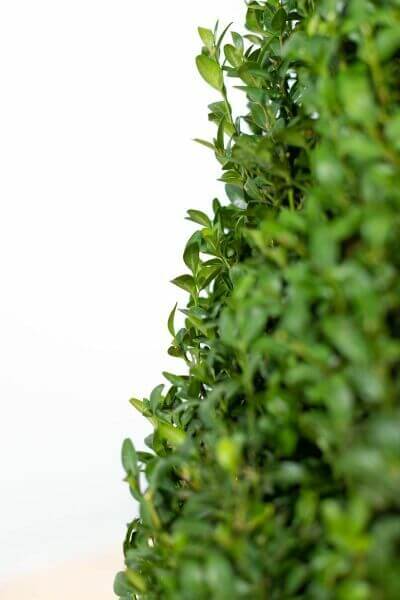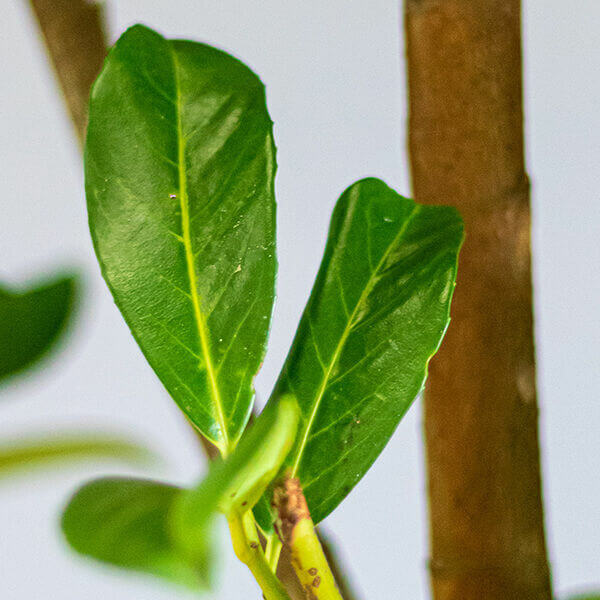Best Hedging Plants For Garden Art
Enhance your garden's appeal with lush hedge varieties such as Yew (Taxus), Thuja, Laurel, Photinia, and Bamboo, celebrated for their structural stability and ecological benefits.
Yew and Thuja supply evergreen coverage and winter strength, while Laurel offers quick development and broad, fragrant leaves.
Photinia includes seasonal beauty with its vibrant red foliage, and Bamboo provides a low-maintenance, tranquil ambiance.
These hedges enhance air quality, lower noise, and produce tranquil, personal areas.
Proper planting, spacing, and upkeep make sure vigorous growth and eco-friendly consistency.
Explore how these rich ranges can raise your garden's beauty and well-being.
Key Takeaways
Change Your Garden With Lush Hedge Ranges
- Select Yew for its thick, evergreen growth and unrivaled longevity.
- Select Laurel for its quick development and broad leaves, ensuring quick privacy.
- Select Photinia for its dynamic seasonal foliage, which turns a striking dark red.
- Use Bamboo for a low-maintenance, winter-hardy hedge with visual appeal.
- Area plants 2-3 per meter and prune frequently for ideal growth and health.
Popular Hedge Plants
When transforming a garden with rich hedge ranges, it's necessary to consider popular hedge plants such as Yew, Thuja, Laurel, and Photinia due to their unique qualities and benefits.
Yew (Taxus) is highly esteemed for its longevity and dense, green growth, making it a prime choice for enduring landscapes.
Thuja is kept in mind for its evergreen foliage and robust winter season strength.
Photinia includes seasonal vibrancy with red leaves that darken with time, developing vibrant visual appeal.
Laurel provides fast growth and aromatic, broad leaves, perfect for fast personal privacy.
Furthermore, Bamboo is an outstanding choice for ambiance, using a low-maintenance, winter-hardy alternative that improves the garden's visual with its sophisticated, swaying walking sticks.
These selections cater to a range of horticultural needs and preferences.
Advantages of Garden Hedges
Garden hedges use a plethora of benefits, making them a valuable addition to any landscape. These natural barriers are cost-effective to carry out and offer significant wind protection, boosting air flow and contributing to sound reduction. The thick foliage of hedges like Thuja and Beech guarantees personal privacy by obstructing exposure, creating a secluded and tranquil environment.
Hedges likewise play a crucial function in microclimate policy, providing a steady environment that fosters plant development and reduces temperature level changes. Their intricate leaf structures filter contaminants, improving air quality and adding to a much healthier garden community.
Additionally, hedges master sound reduction, taking in and deflecting acoustic waves to lower ambient noise levels. This double functionality of providing both visual and acoustic privacy boosts the general harmony and aesthetic appeal of any garden.
Planting and Maintenance Tips
For an effective hedge, meticulous preparation of the planting area is vital. Ensure the soil has appropriate pH and drain to support strong root development.
Area the plants properly for the chosen species. Water the hedge often throughout its preliminary growth phase, changing as required with seasonal modifications.
Carry out a systematic insect control and illness avoidance method, using organic or chemical treatments when essential. Frequently inspect for aphids, mites, and fungal infections.
Apply mulch to retain moisture and suppress weeds. Seasonal pruning promotes dense development and air circulation, essential for plant health.
Following these guidelines will help you cultivate a dynamic, properly maintained hedge that enhances the beauty of your garden.
Spacing and Cutting Standards
Spacing and Cutting Standards
Correct spacing and cutting are crucial for cultivating healthy, visually appealing hedges. Adequate spacing ensures each plant receives sufficient nutrients, light, and air flow.
Follow these standards for optimum hedge upkeep:
- Spacing: Position hedge plants 2-3 plants per meter to motivate robust development.
- Pruning Strategies: Routine pruning is vital for preserving preferred hedge height and shape. Trim new growth in summer and cut down older wood throughout winter season.
- Seasonal Care: Adjust trimming methods and schedules according to seasonal requirements to make sure plant health.
- Hedge Height: Frequently screen and trim to maintain the wanted hedge height and accomplish uniform aesthetic appeals.
Sticking to these steps will ensure your hedge thrives, boosting both the appeal and functionality of your garden.
Choosing the Right Hedge
Picking the Right Hedge
Picking the suitable hedge involves examining aspects such as mature height, foliage density, and ecological durability. Successful hedge plant choice requires understanding each types' growth attributes and site-specific versatility.
For example, Yew (Taxus) offers exceptional longevity and thick growth, while Thuja is significant for its winter strength. Furthermore, thinking about maintenance requirements is crucial; fast-growing types like Laurel or Privet need regular cutting, whereas low-maintenance choices like Bamboo or Ivy may be more suitable for those seeking very little maintenance.
Environmental aspects such as soil type, light accessibility, and wetness conditions should likewise assist the selection procedure. This mindful method makes sure the chosen hedges will flourish, providing both visual and practical advantages to the garden landscape.
Shipment and Planting Recommendations
To guarantee your hedge plants thrive, they must be provided by specialized couriers and planted immediately upon arrival.
Follow these necessary steps for successful planting:
- Soil Preparation: Enhance the soil with natural matter to improve drainage and nutrient content.
- Planting Depth: Produce a trench two times the width and equivalent to the depth of the root ball.
- Watering Techniques: Water thoroughly after planting, keeping the soil consistently damp however not filled.
- Mulching: Use a layer of mulch to maintain moisture and suppress weeds.
Customer Assistance and Service
Offered the crucial role of timely support in horticultural pursuits, our client assistance group is available six days a week through telephone, email, and social media to provide professional suggestions and promptly address any concerns. Their dedication to quick response times ensures customer complete satisfaction by solving questions related to plant health, optimal planting methods, and upkeep schedules.

Six days a week
This detailed support group, enhanced by an excellent 9.3/ 10 client score, highlights our dedication to improving the gardening experience for each client.
Often Asked Questions
The Length Of Time Does It Consider Hedge Plants to Establish?
Hedge plants normally need one to three years to end up being fully developed, with the exact period varying by types and growing conditions.
Efficient care during this vital period is essential for robust development. Consistent watering, watchful weed control, and appropriate fertilizer application are critical in promoting strong root advancement.
For example, fast-growing types like Laurel might establish quicker, while slower-growing varieties such as Yew might take longer. Thorough maintenance accelerates the facility procedure, resulting in dense and healthy hedges.
What Are the very best Hedge Plants for Privacy?
The concern of the very best hedge plants for privacy involves assessing evergreen and deciduous choices.
Evergreen hedges like Thuja, Laurel, and Cypress provide year-round protection, making sure constant personal privacy.
On the other hand, deciduous hedges such as Beech offer seasonal privacy, shedding leaves in colder months.
Secret upkeep suggestions for privacy hedges consist of regular trimming, fertilizing in spring, and correct spacing-- normally 2 to 3 plants per meter.
In addition, consistent watering and thorough weed removal are vital for promoting healthy, thick growth.
Can Hedge Plants Bring In Wildlife to My Garden?
Yes, hedge plants can draw in wildlife to your garden by providing necessary advantages like shelter, food, and nesting websites, consequently boosting local biodiversity. For example, yew, holly, and laurel are exceptional for drawing in birds, while ivy supports a range of bugs.
Nevertheless, it is essential to keep in mind that there are some drawbacks, such as increased upkeep to manage bugs and regular upkeep. Thoroughly selecting and preserving hedge ranges can help stabilize these advantages and disadvantages, ultimately promoting a sustainable and dynamic environment in your garden.
Exist Any Flowering Hedge Plants Available?
Yes, there are flowering hedge plants offered that can boost the charm of your garden.
For instance, Elaeagnus, also referred to as Olive Willow, produces aromatic white flowers in the fall, including a touch of elegance.
Photinia, another popular choice, showcases lively red leaves that grow into an abundant green, developing a dynamic visual result throughout the seasons.
To ensure these plants thrive, it's vital to practice correct pruning strategies and seasonal upkeep, such as cutting brand-new development in the summertime and cutting down in the winter.
These steps will help maintain the health and visual appeal of your blooming hedges.
How Do I Avoid Insects in My Hedge Plants?
To prevent pests in hedge plants, use natural bug control techniques and preserve proper hedge care. Present helpful pests like ladybugs, which take advantage of hazardous pests, to develop a balanced ecosystem.
Regularly check your hedges for indications of infestation and promptly get rid of any affected parts to prevent the spread. Make sure the health of your hedges by applying well balanced fertilizers and offering adequate water.
Use mulching to retain soil wetness and proper spacing to lower plant stress and promote robust development. These practices collectively assist in reducing bug problems and maintaining a healthy hedge.
Conclusion
In essence, picking the best hedge ranges such as Yew, Thuja, and Laurel can transform any garden into a read more relaxing haven. These plants supply year-round greenery, improve visual appeal, and offer useful benefits like noise decrease and wind protection.
Appropriate planting strategies, accurate spacing, constant watering, and seasonal cutting are important for ideal growth.
Reliable delivery services and skilled consumer support guarantee a smooth experience from purchase to planting, making it simpler than ever to elevate your outside area.
Garden hedges provide a plethora of advantages, making them a valuable addition to any landscape. These natural barriers are cost-efficient to implement and offer considerable wind defense, boosting air circulation and contributing to noise reduction. The dense foliage of hedges like Thuja and Beech guarantees personal privacy by blocking presence, developing a serene and secluded environment.

Pruning Methods: Regular pruning is essential for keeping preferred hedge height and shape. Trim brand-new growth in summer and cut back older wood throughout winter.
Comments on “Hedging Plants For Wildlife Friendly Gardens”